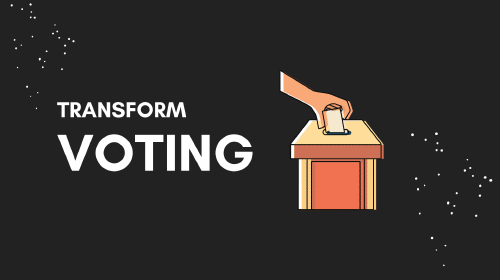Browser Security Settings Everyone Should Know
Salomon Kisters
Jun 21, 2023This post may contain affiliate links. If you use these links to buy something we may earn a commission. Thanks!
In today’s digital age, we rely heavily on web browsers to access a vast amount of information and services online. However, with this increased reliance comes an increased risk of online threats such as malware, phishing attempts, and identity theft.
This is where browser security settings come into play. By configuring our browsers to enhance security, we can significantly reduce our risk of online threats and protect our sensitive information.
In this blog post, we will explore some of the essential security settings that everyone should know and implement to browse the internet safely.
So, let’s dive in and take a look at some browser security tips that will help safeguard our online experience.
Understanding Browser Security Settings
To understand browser security settings, we need to know how they work and what they do. Browser security settings are a set of options that can be adjusted to enhance or decrease the level of security when browsing the internet. They can also be used to customize our browsing experience by setting preferences for various features such as cookies, pop-ups, and plugins.
Some common security settings include enabling or disabling JavaScript, installing ad-blockers and anti-virus software, configuring privacy settings, and setting up two-factor authentication. These settings help keep our data and information safe by preventing malicious attacks, blocking unwanted pop-ups and ads, and reducing the risk of data breaches.
It is important to note that while browser security settings can provide significant protection from online threats, they are not foolproof and may not provide complete protection. Therefore, it is crucial to regularly update our browsers and software, avoid clicking on suspicious links or downloading files from untrusted sources, and use common sense when surfing the web.
Types of Browser Security Settings Available
There are various types of browser security settings available that we can use to enhance our online security. Some of the most common ones include:
Privacy settings: These settings allow us to control our privacy while browsing the web. We can choose which data we want to share with websites such as location, browsing history, and personal information. We can also clear our browsing history, cookies, and cache regularly to prevent websites from tracking our activities.
Security certificates: Certificates are used to verify the authenticity of websites. They ensure that the website we are visiting is trusted and encrypted, which provides a secure connection between our computer and the website.
JavaScript settings: JavaScript is a programming language that is widely used on websites. However, it can also be used to execute malicious code. By configuring our JavaScript settings, we can choose to enable or disable this feature depending on our level of trust with the website.
Pop-up settings: Pop-ups can be annoying and sometimes even malicious. By enabling our pop-up settings, we can prevent these windows from opening and potentially infecting our computer with malware.
Add-ons and extensions: Add-ons and extensions can add additional functionality to our browsers, but they can also pose a security risk. By carefully selecting and managing our add-ons, we can reduce the risk of malware infection and improve our online security.
Best Practices for Configuring Browser Security Settings
When it comes to configuring browser security settings, there are best practices that everyone should follow to ensure maximum protection. These include:
Updating your browser: Ensuring that your browser is up-to-date is key to maintaining your online security. Updates often include security patches that fix known vulnerabilities and bugs.
Using strong passwords: Many browsers save passwords for convenience, but this can be a security risk if your device is lost or stolen.
Enabling automatic updates: By enabling automatic updates, you can ensure that your browser is always up-to-date with the latest security patches and bug fixes.
Avoiding public Wi-Fi: Using public Wi-Fi can be convenient, but it also puts your online security at risk. Public Wi-Fi is often unsecured, which can make it easy for hackers to intercept your data and compromise your privacy.
Using a VPN: A virtual private network (VPN) encrypts your online activity and hides your IP address, which makes it difficult for hackers to track your online movements.
Top Browser Security Settings to Enable
Apart from following best practices, there are some specific browser security settings that you should enable to enhance your online security. These settings include:
Enable Pop-up Blocker: Pop-ups can be annoying and they can also be used by hackers to deliver malware or phishing links. Enabling the pop-up blocker in your browser can help prevent these types of attacks.
Disable Autofill: Autofill can be a convenient feature, but it can also store sensitive information such as login credentials and credit card details. Disabling this feature can prevent this information from being leaked or stolen.
Enable Do Not Track: Do Not Track is a feature that requests websites to not track your online activity. While not all websites honor this request, enabling this feature can help prevent some websites from collecting your personal information.
Enable Privacy Settings: Most browsers have privacy settings that can restrict certain types of content from being loaded, such as cookies, images, and scripts. Enabling these settings can prevent malicious content from loading on your browser.
Enable Two-Factor Authentication: Two-Factor Authentication (2FA) is a security feature that requires you to provide a second form of authentication in addition to your password. Enabling 2FA can prevent unauthorized access to your online accounts.
How Browser Security Settings Affect Your Browsing Experience
Enabling browser security settings is important for online security, but it can also affect your browsing experience. The pop-up blocker, for instance, can prevent legitimate pop-ups from websites that you trust, such as ones that require pop-ups for certain functionalities like online payments. Disabling autofill can also mean that you will need to manually enter your login credentials and other details every time you visit a website, which can be time-consuming.
Enabling Do Not Track can prevent some websites from tracking your online activity, but it may also affect your browsing experience by preventing some websites from displaying personalized content or advertisements based on your interests. Enabling privacy settings can also restrict certain types of content from being loaded, which can affect the functionality and display of some websites.
Lastly, enabling Two-Factor Authentication can add an extra layer of security to your online accounts, but it can also mean that you will need to provide an additional form of authentication every time you log in to your accounts. This can be inconvenient, but it is a necessary step to ensure that your accounts are protected from unauthorized access.
Conclusion
Regularly checking and adjusting your browser security settings is crucial for maintaining a high level of online security. Hackers and cybercriminals are constantly finding new ways to exploit vulnerabilities in browsers, and outdated or misconfigured security settings can make you an easy target.
Additionally, your browsing habits and needs may change over time, and what worked for you in the past may no longer be sufficient for your current needs. For instance, you may have started using new online services that require different security settings or you may have become more concerned about your online privacy.
Therefore, it is important to regularly review and adjust your browser security settings to ensure that they are up-to-date and align with your current needs and priorities. This may involve enabling or disabling specific settings, such as autofill or Do Not Track, based on the websites you frequently visit and the services you use.
Stay informed with the latest insights in Crypto, Blockchain, and Cyber-Security! Subscribe to our newsletter now to receive exclusive updates, expert analyses, and current developments directly to your inbox. Don't miss the opportunity to expand your knowledge and stay up-to-date.
Love what you're reading? Subscribe for top stories in Crypto, Blockchain, and Cyber-Security. Stay informed with exclusive updates.
Please note that the Content may have been generated with the Help of AI. The editorial content of OriginStamp AG does not constitute a recommendation for investment or purchase advice. In principle, an investment can also lead to a total loss. Therefore, please seek advice before making an investment decision.

Polkadot: Decentralized Web Protocol and Advanced Features Explained
Learn about Polkadot, a decentralized web protocol and blockchain with advanced features designed by Gavin Wood. Explore how Polkadot works and its unique advantages.

How to Create a Bitcoin Blockchain Address: A Step-by-Step Guide
Discover the process of generating a Bitcoin blockchain address through our detailed step-by-step tutorial. Get started with cryptocurrency now!

How Blockchain Voting Systems Transform the Way We Vote
Guaranteeing secure and transparent elections nowadays is almost impossible. Find out how Blockchain Voting Systems can make the voting process more transparent
Protect your documents
Your gateway to unforgeable data. Imprint the authenticity of your information with our blockchain timestamp